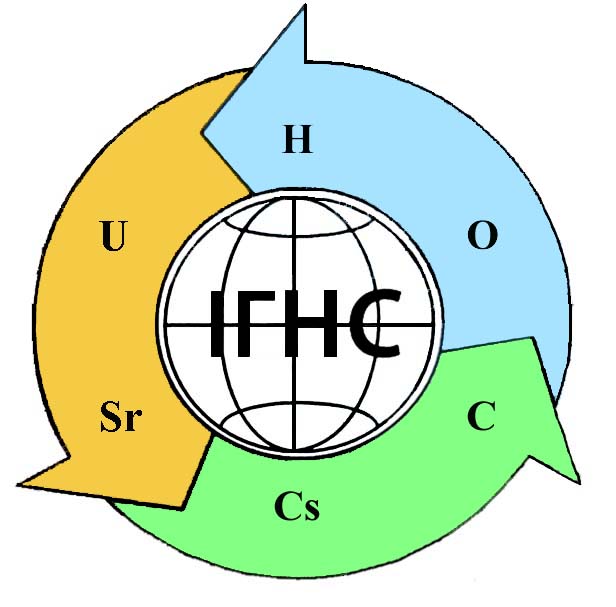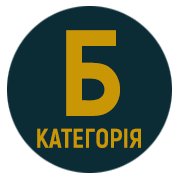GEOCHEMICAL TRANSFORMATION OF ENVIRONMENTAL OBJECTS WITHIN SOLID WASTE LANDFILLS (ON THE EXAMPLE OF KYIV)
DOI:
https://doi.org/10.15407/geotech2020.34.113Keywords:
geochemical transformation, anthropogenic metals, soils, surface waters, groundwater.Abstract
The presented research is devoted to the study of geochemical transformation of environmental key objects (soils, surface and groundwater) within the solid waste landfills. The object of the study is the one of the largest landfills for solid waste disposal in Ukraine – Kyiv landfill №5. The main factual material, which is the basis of the article, was obtained by the authors during a comprehensive field ecological and geochemical research in 2018-2020. The aim of the work was to determine the geochemical (in particular physical and chemical) features of soil sediments within the landfill, which made it possible to assess the protective properties of soils in relation to the impact of technogenic metals. The condition of surface waters (ponds within the landfill territory) and groundwater (wells in Pidhirtsi village) was also studied; the comparison of the main indicators of chemical composition with the maximum allowable concentrations determined by normative documents was performed. It was found that in the studied soils there is a high concentration of heavy metals associated with the fraction of easily exchangeable ions, as well as an increased content of water-soluble forms. The main migration forms of macro- and microelements in soil solutions have been established. It was found that free hydrated cations and metal-organic complexes are characteristic of heavy metals. For groundwater used for potable water consumption by the population of Pidhirtsi village, exceeding of maximum allowable concentrations were recorded for certain indicators, in particular for nitrates, as well as deviations from the established norms for Ba, SO4, Fe, Mn, Co, Ni, Mo, and Pb. The pond waters, located directly within the landfill territory, are characterized by significant deviations from the norm in terms of Fe, Mn, Ni, Ti, V, Cu and Zn. As a result of the study, it was found that within the landfill there are favorable conditions for the formation of mobile forms of toxic elements and their migration to surface and groundwater.
References
Mihai, FC., Iatu C. and Grozavu., A. (2018), Rural waste disposal issues within urban borders. Conference Proceedings (18th International Multidisciplinary Scientific GeoConference on Ecology, Economics, Education and Legislation SGEM 2018), Vol.18, Issue 5.1, pp.761–768. https://doi.org/10.5593/sgem2018/5.1/S20.098
Awomeso, J.A., Taiwo, A.M., Gbadebo, A.M. and Arimoro, A.O. (2010), Waste Disposal and Pollution Management in Urban Areas: A Workable Remedy for the Environment in Developing Countries. American Journal of Environmental Sciences, Vol. 6(1), pp. 26–32. https://doi.org/10.3844/ajessp.2010.26.32
Азімов О.Т., Трофимчук І.В., Кураєва І.В., Кармазиненко С.П. Оцінка вмісту важких металів у ґрунтах та інших компонентах ландшафту в районах захоронення твердих побутових відходів. Екологічна безпека та природокористування. 2019. № 2(30). С. 5–17. https://doi.org/10.32347/2411-4049.2019.2.5-17
Трофимчук О.М., Кураєва І.В., Азімов О.Т., Кармазиненко С.П., Злобіна К.С. Геохімічні характеристики ґрунтових утворень районів захоронення побутових відходів за результатами екологічних досліджень. Екологічна безпека та природокористування. 2020. № 3(35). С. 5–21. https://doi.org/10.32347/2411-4049.2020.3.5-21
Азімов О.Т., Кураєва І.В., Трофимчук О.М., Кармазиненко С.П., Злобіна К.С. Забруднення ґрунтів та інших об’єктів довкілля важкими металами в районах полігонів захоронення твердих побутових відходів. Геоінформатика. 2020, №1. С.82-95.
Самчук А.И., Бондаренко Г.Н., Долин В.В. и др. Физико-химические условия образования мобильных форм токсичных металлов в почвах. Минералогический журнал. 1998. Т. 20. № 2. С. 48–59.
Пилипенко А.Т., Пятницкий И.В. Аналитическая химия. Москва: Химия, 1990. Кн. 2. С. 481-846.
Музгин В.Н., Емельянова H.H., Пупышев А.А. Масс-спектрометрия с индуктивно-связанной плазмой – новый метод в аналитической химии. Аналитика и контроль. 1998. № 3–4. С. 3–25.
Tessier, A., Cambell, P.G.C. and Bisson, M. (1979), Sequential extraction procedure for the speciation of particulate trace metals. Analytical Chemistry, Vol. 51, pp. 844-851. https://doi.org/10.1021/ac50043a017
Allison, I.D., Brown, D.S. and Novo-Gradac, K.I. (1990), MINTEQA 2 PRODEFA 2. A Geochemical Assessment Model for Environmental Systems: Version Z.O. User’s Manual VS Environmental Protection Agency, 278 p.









